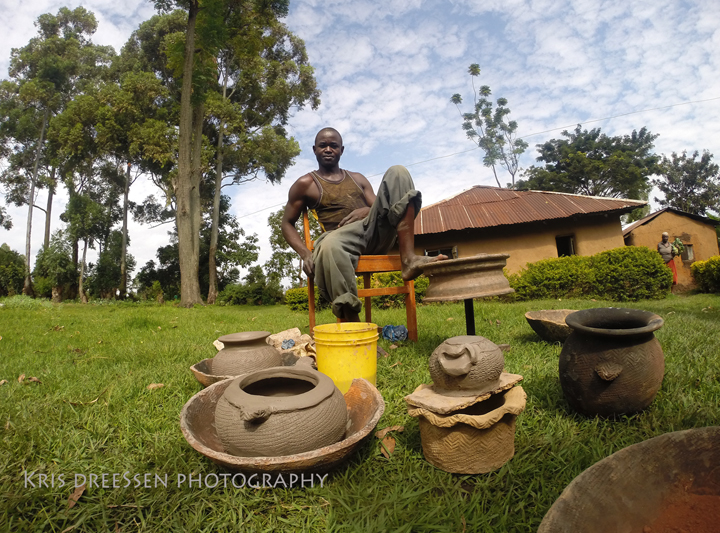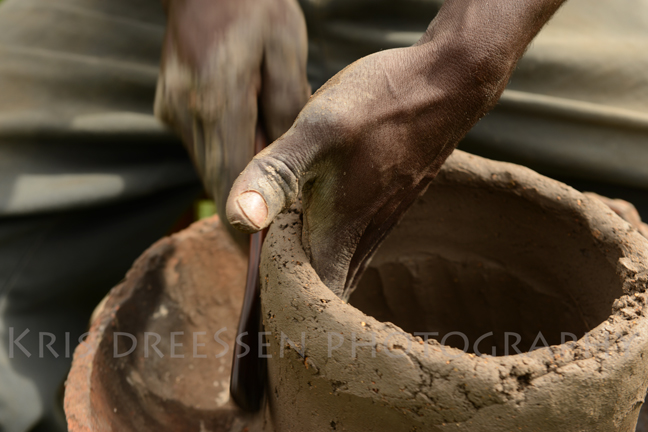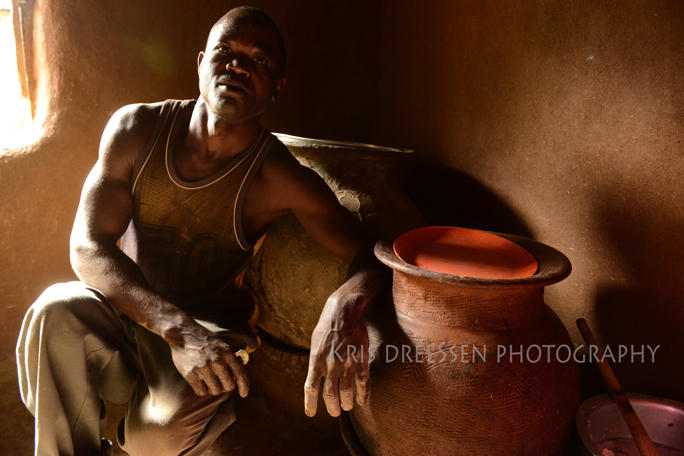
CHEPTULU,KENYA — Cosmos Alusiola needs the right kind of clay for this traditional Tiriki pottery and the earth near Cheptulu town isn’t.
When he needs it, someone packs sacks of the special clay and soil from his hometown of Masingo and he pays for it to be sent on a bus.

Kneading it with water, Cosmos, 38, then creates several types of handmade vessels that he sells to support his family and that area families use for water storage, food staples and even little piggy banks.
“It is an old skill,” used for as long as anyone can remember in Tiriki communities, says Comsos, “but it’s generating a living for me.”
Cosmos’ father taught him the traditional craft when he was a boy. His three brothers took it up; his four sisters didn’t. In Masingo there are more potters. While it’s an old skill, done by Tirikis for generations, Cosmos is benefitting from some new improvements.
His potter’s wheel is made from an old car rim. Adopting the technique, he can produce twice what he did when he turned the clay by hand, set on a plate in the grass.
Typically, the rounded containers with the slimmer necks Cosmos makes are used to store vegetables, the maize flour and water mixture eaten all the time called ugali, flour and other staples. The largest water vessel holds 60 liters and functions like a cooling fridge. They are all varying sizes; the smallest is a small container with a slit for dropping in schillings for savings. Like a piggy bank, the owner breaks it open when it’s full.

Cosmos sells them at the Cheptulu market days and other markets and can earn about $20 a day. Vegetable and ugali pots are usually sold for 80 schillings — a bit less than $1 US — and the largest water vessel is 400 schillings, or about $5.
Making one now, as well as several mid-size ugali containers, Cosmos sits on a chair behind the car-rim wheel. A metal bar and tripod-like legs are welded onto it to make a stand, and a bearing lets him spin the rim as fast or slow as he wishes. He grabs the wet grey clay and quickly forms a sausage-like section from it. He lays it on top of the base layer, and keeps adding it and massaging each piece into the other as he spins the car rim.
In a matter of minutes he has a grayish vessel, which he decorates by imprinting braided and twisted cord and ropes into the sides. He’s made them himself so each container he makes is unique.
“We can always improvise,” he says. “You don’t buy it from anywhere and I make them myself.”
Cosmos says he will teach his children how to make pottery and demonstrates the craft to student classes as well.
“I’m happy to give the skills to others and children,” he says.
